The clothes and jewellery of the Vikings
Finds of clothes from the Viking period are rare. These often consist of small pieces of material preserved by chance. Our knowledge about Viking clothes is supplemented by written sources, as well as clothes depicted on small figures and tapestries.
Like today’s men and women, the Vikings dressed according to sex, age and economic status. The men preferred trousers and tunics, whilst the women dressed in strap dresses worn over undergarments. Ordinary Viking clothes were made of local materials, like wool and flax, woven by the women.
On the other hand, finds from the graves of wealthy individuals show that some clothes were definitely imported. The upper classes displayed their wealth by adorning themselves in silk and gold threads from foreign parts, like Byzantium. The Vikings supplemented their attire with jewellery and furs from different animals.
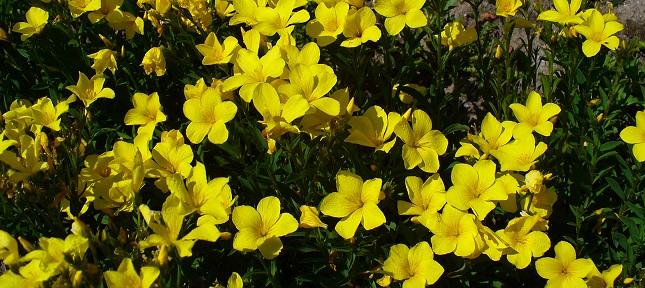
Female clothes
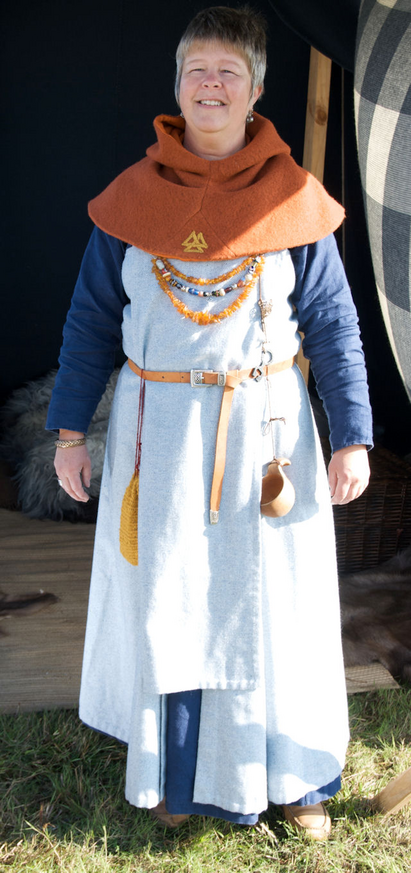
The Viking woman typically wore a strap dress with an undergarment or smock underneath.
The strap dress was a close-fitting dress, made of coarse material, which was sewn together. It was either open or sewn together at the sides. In addition, gussets could be sewn into the dress to give it shape. The strap dress fitted over the chest and was held up by a strap on each shoulder. The strap was fastened at the front with a shell-shaped brooch. Between the two brooches there was often a string of beads.
Under her strap dress the woman wore an undergarment or smock. Research shows that Danish Viking women preferred plain undergarments, whilst Swedish Viking women wore pleated ones. There was therefore even an element of fashion in undergarments.
The woman of the period also wore a cloak over her shoulders, which was fastened with a small round or trilobite brooch. The cloak and the dress could be decorated with woven borders and bands of fur.
Around the waist the woman wore a belt, with small leather purses for the keeping of small items, such as sewing needles and strike-a-lights. A strike-a-light was a curved piece of iron used to produce sparks.
The Viking woman wore leather shoes on her feet.
Children’s clothes
The clothes worn by children reflected those of their parents, both in their type and fineness. Young girls wore smocks, whilst young boys wore tunics and trousers.
Viking women on expeditions?
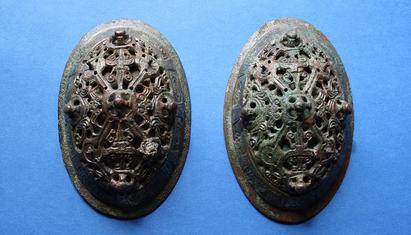
The Arabic diplomat Ibn Fadlan wrote that travelling Viking women in Russia wore beads of green glass. On the chest they carried a case of iron, silver, copper or gold. In this case was a knife. The case mentioned may have been the item of jewellery that archaeologists call a concave brooch.
Concave brooches have been found in various parts of Europe where the Vikings settled, including England, Ireland, Russia and Iceland. This indicates that Viking women may have been present on expeditions.
Male clothes
The Viking male often wore a tunic, trousers and a cloak.
The tunic was reminiscent of a long-armed shirt without buttons and might go down to the knees. Over his shoulders the man wore a cloak, which was fastened with a brooch. The cloak was gathered over the arm that he drew his sword or axe with. In this way it was possible to see whether a Viking was right- or left-handed.
We do not know a great deal about the shape of the trousers. They were perhaps a type of plus fours, which were gathered up under the knee. The plus fours must have required socks or puttees wound around the shins. Puttees are a variety of legwarmers in which a long narrow piece of material is wound around the legs to give warmth. As footwear, men wore leather shoes or boots.
As their clothes had no pockets or elastic, men wore belts or had string fastened around the waist to hold their clothes up. On his belt, the man might carry a purse or knife. The purse could contain various items, like a strike-a-light, comb, nail cleaner, gaming pieces and silver coins.
Some men also wore caps, which were either pointed or had rounded crowns. The caps were made of material or skin.
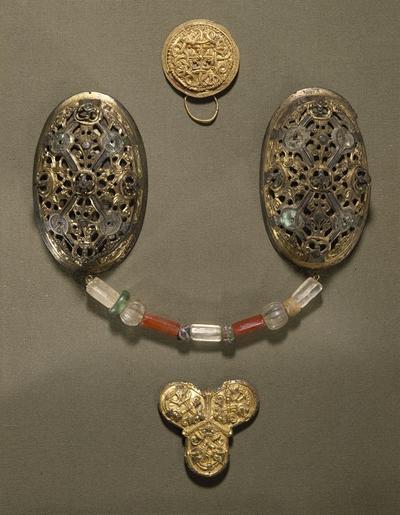
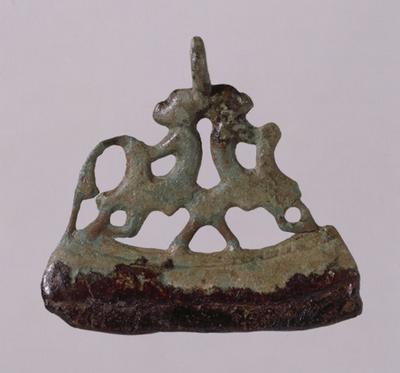
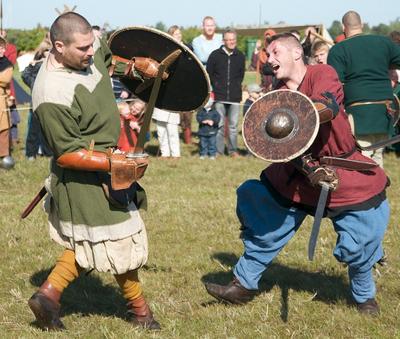
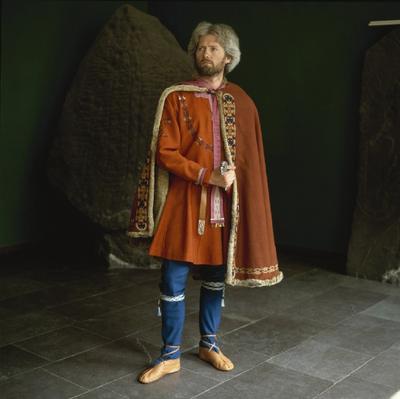
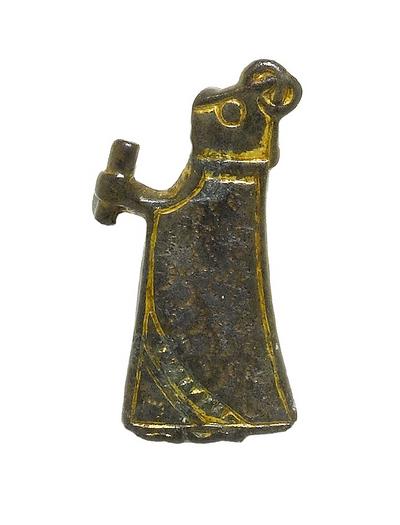
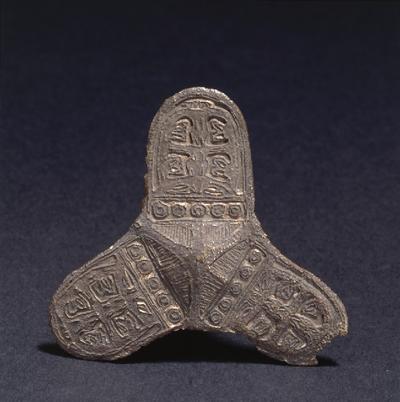
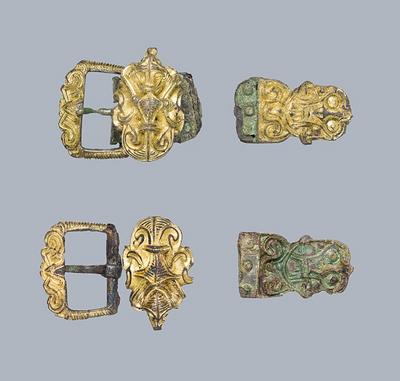
The Viking warrior's clothes
In addition to the clothes that he wore, the warrior also carried weapons. These might consist of an axe, sword, helmet, spear, lance and a round shield. Iron was expensive in the Viking Age and by no means all warriors had a full range of equipment.
Waterproof clothes
The Vikings were also familiar with waterproof clothes. These were made from skins treated with beeswax to make them soft and fish oil so that they were waterproof.
The Byzantine court fashion and the upper class
In the Viking period the upper class had contact with many different parts of the world and this was reflected in their attire. The Byzantine court style, in particular, inspired the clothes worn by the Danish upper class.
It is clear from Danish burials dating to the late 900s, that the Viking upper class were part of Christian European court circles, which had contacts with Byzantium. Within these circles silk was amongst the most sought after materials. Silk was associated with prestige. It was a relic of the rule of the Byzantine emperor Justinian (527-565), who used it to display his power. In the following 600 years Byzantium maintained a monopoly on silk production in Europe.
In addition, different silk colours could signal wealth and power. The bright blue and red colours were especially sought after. We find these associated with the Mammen prince from Bjerringhøj in Jutland, Denmark. His red and blue clothes were those of a magnate.
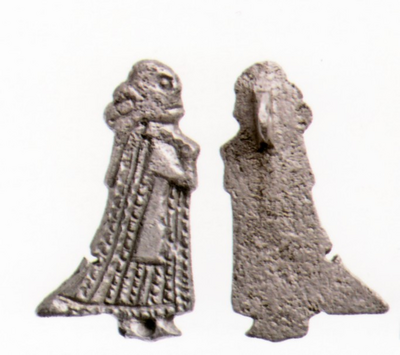
Fabrics and colouring
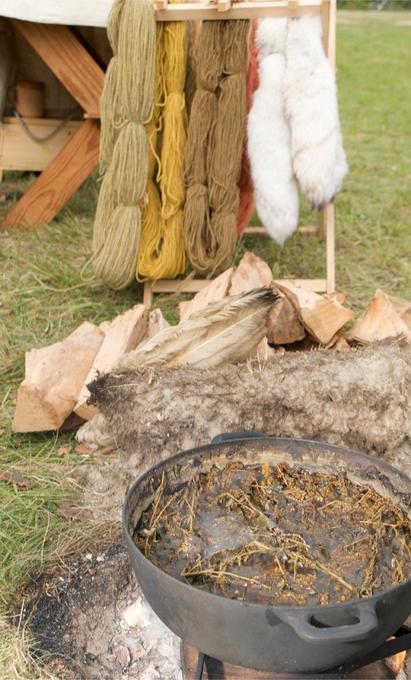
Clothes were woven in many different colours. Coloured yarn could be produced in the Viking Age by boiling the material with various colour-yielding plants. The colours that archaeologists know were used in Viking Age clothes are yellow, red, purple and blue. Blue has only been found in the burials of wealthy individuals, as it was apparently a precious colour. The blue colour came from either the local plant woad or the dye indigo, which was purchased abroad.
Around 40% of finds of Viking Age fabric have been identified as flax. Flax must therefore have been an important plant for the production of Viking clothes. Research shows that more than 20 kg of flax plants was needed to produce enough material to make a tunic. In addition, the task - from when the flax was sown until the tunic was stitched – probably required almost 400 work hours. Several sites have been found in Denmark, at which flax was produced on an almost industrial scale. Flax must therefore have been an important product in Viking Age trade.
Jewellery in the Viking Age
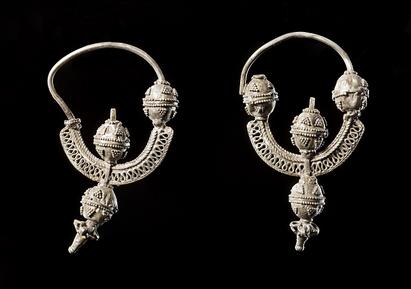
$Men and women from all layers of society wore jewellery, in the form of arm rings, necklaces and brooches. Some of the jewellery was ornamental and it could also indicate wealth. Other items, such as brooches, often had a practical function as well – to fasten clothes. In addition, there were pieces of jewellery that had symbolic value, such as Thor’s hammers.
Apparently the Vikings did not wear ear rings. But it was not because they were unfamiliar with them. They must have encountered them on expeditions where they came into contact with Slavic peoples.
Jewellery could be made from various materials, such as wood, glass, amber, bronze and gold. Pieces of jewellery were often decorated with geometric designs, plaited bands, animal heads and gripping beasts.
